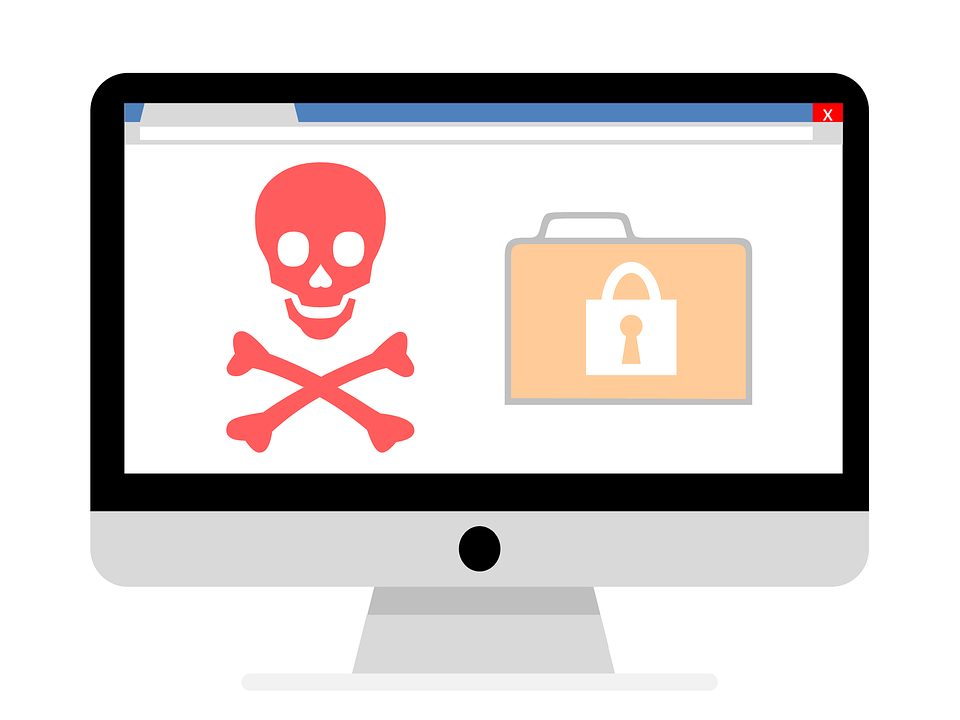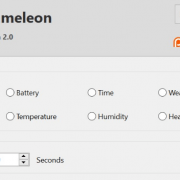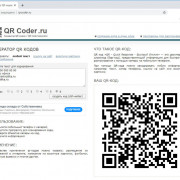Malwarebytes anti-malware
Содержание:
- Do Macs get malware?
- How do I get spyware?
- Types of spyware
- Current status of computer viruses and antivirus programs
- How does anti-malware work?
- Что такое mbam.exe?
- Do mobile devices get malware?
- What’s the difference between antivirus and anti-malware?
- If viruses aren’t as big of a threat anymore, why do I need an antivirus for my computer?
- Types of ransomware
- How can I tell if I have a malware infection?
- All about spyware
- What is the history of malware?
- Who does malware target?
- Могу ли я удалить или удалить mbam.exe?
Do Macs get malware?
Conventional wisdom has sometimes held that Macs and iPads are immune to catching viruses (and don’t need an antivirus). For the most part, that’s true. At the very least, it hasn’t happened in a long time.
“Mac systems are subject to the same vulnerabilities (and subsequent symptoms of infection) as Windows machines and cannot be considered bulletproof.”
Other kinds of malware are a different story. Mac systems are subject to the same vulnerabilities (and subsequent symptoms of infection) as Windows machines and cannot be considered bulletproof. For instance, the Mac’s built-in protection against malware doesn’t block all the adware and spyware bundled with fraudulent application downloads. Trojans and keyloggers are also threats. The first detection of ransomware for Macs occurred in March 2016, when a Trojan-delivered attack affected more than 7,000 Mac users.
In fact, Malwarebytes saw more Mac malware in 2017 than in any previous year. By the end of 2017, the number of new unique threats that our professionals counted on the Mac platform was more than 270 percent higher compared to the number noted in 2016.
Read more about the state of. Mac antivirus and anti-malware.
How do I get spyware?
Spyware can infect your system in the same ways as any other form of malware. Here are a few of spyware’s main techniques to infect your PC or mobile device.
- Security vulnerabilities, e.g. backdoors and exploits. An exploit is a security vulnerability in your device’s hardware or software that can be abused or exploited to gain unauthorized access. Software vulnerabilities are also known as “software bugs” or just “bugs” for short. Exploits are an unintentional byproduct of hardware and software manufacturing. Mistakes happen and bugs manage to find their way in to even the most polished consumer technology. Backdoors, on the other hand, are put in place on purpose as a way to quickly gain access to your system after the fact. Sometimes the hardware and software makers themselves put the backdoors in. More often than not, however, cybercriminals will use an exploit to gain initial access to your system then install a permanent backdoor for future access.
- Phishing and spoofing. These two threats are often used in tandem. Phishing happens whenever criminals try to get you to perform some sort of action such as clicking a link to a malware-laden website, opening an infected email attachment (aka malspam), or giving up your login credentials. Spoofing refers to the act of disguising phishing emails and websites so that they appear to be from and by individuals and organizations you trust.
- Misleading marketing. Spyware authors love to present their spyware programs as useful tools to download. It might be an Internet accelerator, new download manager, hard disk drive cleaner, or an alternative web search service. Beware this kind of “bait,” because installing it can result in inadvertent spyware infection. And even if you eventually uninstall the “useful” tool that initially introduced the infection, the spyware remains behind and continues to function.
- Software bundles. Who doesn’t love free software (freeware)? Except when it’s a host program that conceals a malicious add-on, extension, or plugin. Bundleware may look like necessary components, but they are nonetheless spyware, which, again, remains even if you uninstall the host application. Making matters worse, you may find that you actually agreed to install the spyware when you accepted the terms of service for the original application.
- Trojans. Broadly speaking, if malware pretends to be something it’s not—that means it’s a Trojan. That said, most Trojans today are not threats in and of themselves. Rather, cybercriminals use Trojans to deliver other forms of malware, like cryptojackers, ransomware, and viruses.
- Mobile device spyware. Mobile spyware has been around since mobile devices became mainstream. Mobile spyware is especially devious since mobile devices are small and users generally can’t see what programs are running in the background as easily as they might on their laptop or desktop. Both Mac and Android devices are vulnerable to spyware. These apps include legitimate apps recompiled with harmful code, straight up malicious apps posing as legitimate ones (often with names resembling popular apps), and apps with fake download links.
“Mobile spyware has been around since mobile devices became mainstream.”
Types of spyware
In most of the cases, the functionality of any spyware threat depends on the intentions of its authors. For example, some typical functions designed into spyware include the following.
-
- Password stealers are applications designed to harvest passwords from infected computers. The types of collected passwords may include stored credentials from web browsers, system login credentials, and sundry critical passwords. These passwords may be kept in a location of the attacker’s choosing on the infected machine or may be transmitted to a remote server for retrieval.
- Banking Trojans (e.g. Emotet) are applications designed to harvest credentials from financial institutions. They take advantage of vulnerabilities in browser security to modify web pages, modify transaction content, or insert additional transactions, all in a completely covert fashion invisible to both the user and host web application. Banking Trojans may target a variety of financial institutions, including banks, brokerages, online financial portals, or digital wallets. They might also transmit collected information to remote servers for retrieval.
- Infostealers are applications that scan infected computers and seek out a variety of information, including usernames, passwords, email addresses, browser history, log files, system information, documents, spreadsheets, or other media files. Like banking Trojans, infostealers may exploit browser security vulnerabilities to collect personal information in online services and forums, then transmit the information to a remote server or store it on your PC locally for retrieval.
- Keyloggers, also referred to as system monitors, are applications designed to capture computer activity, including keystrokes, websites visited, search history, email discussions, chatroom dialogue, and system credentials. They typically collect screenshots of the current window at scheduled intervals. Keyloggers may also collect functionality, allowing for stealthy capture and transmission of images and audio/video from any connected devices. They might even allow attackers to collect documents that are printed on connected printers, which can then be transmitted to a remote server, or stored locally for retrieval.
Current status of computer viruses and antivirus programs
PC viruses today are more of a legacy threat than an ongoing risk to computer users. They’ve been around for decades and have not substantially changed.
So, if computer viruses aren’t really a thing anymore, why do people still call their threat protection software an antivirus program, and why do you need an antivirus for computers in the first place?
Name Recognition:
It boils down to entrenched name recognition. Viruses made sensational headlines in the 90s, and security companies began using antivirus as shorthand for cyberthreats in general. Thus, the term antivirus was born.
Decades later, many security firms still use this term for marketing their products. It’s become a vicious cycle. Consumers assume viruses are synonymous with cyberthreats, so companies call their cybersecurity products antivirus software, which leads consumers to think viruses are still the problem.
New Virus Attacks:
But here’s the thing. While virus and antivirus are not exactly anachronisms, modern cyberthreats are often much worse than their viral predecessors. They hide deeper in our computer systems and are more adept at evading detection. The quaint viruses of yesterday have given rise to an entire rogue’s gallery of advanced threats like spyware, rootkits, Trojans, exploits, and ransomware, to name a few.
As these new attack categories emerged and evolved beyond early viruses, companies making antivirus for computers continued their mission against these new threats. However, these companies were unsure of how to categorize themselves.
Should they continue to market their products as antivirus software at the risk of sounding reductive? Should they use another «anti-threat» term for marketing themselves like «anti-spyware,» for example? Or was it better to take an all-inclusive approach and combine everything in a single product line that addressed all threats? The answers to these questions depend on the company.
Cybersecurity with Malwarebytes:
At Malwarebytes, cybersecurity is our highest-level catchall category. It makes sense to combine our anti-threat effort into a single term that covers more than just viruses. Accordingly, the term we use to cover most of what we do is “anti-malware,” which is short for “anti-malicious software.”
“Consumers assume viruses are synonymous with cyberthreats, so companies call their cybersecurity products antivirus software, which leads consumers to think viruses are still the problem.”
How does anti-malware work?
The old school method of signature-based threat detection is effective to a degree, but modern anti-malware also detects threats using newer methods that look for malicious behavior. To put it another way, signature-based detection is a bit like looking for a criminal’s fingerprints. It’s a great way to identify a threat, but only if you know what their fingerprints look like. Modern anti-malware takes detection a step further so it can identify threats it has never seen before. By analyzing a program’s structure and behavior, it can detect suspicious activity. Keeping with the analogy, it’s a bit like noticing that one person always hangs out in the same places as known criminals and has a lock pick in his pocket.
This newer, more effective cybersecurity technology is called heuristic analysis. “Heuristics” is a term researchers coined for a strategy that detects threats by analyzing the program’s structure, its behavior, and other attributes.
Each time a heuristic anti-malware program scans an executable file, it scrutinizes the program’s overall structure, programming logic, and data. All the while, it looks for things like unusual instructions or junk code. In this way, it assesses the likelihood that the program contains malware. What’s more, a big plus for heuristics is its ability to detect malware in files and boot records before the malware has a chance to run and infect your computer. In other words, heuristics-enabled anti-malware is proactive, not reactive.
Some anti-malware products can also run the suspected malware in a sandbox, which is a controlled environment in which the security software can determine whether a program is safe to deploy or not. Running malware in a sandbox lets the anti-malware look at what the software does, the actions it performs, and whether it tries to hide itself or compromise your computer.
Another way heuristic analytics helps keep users safe is by analyzing web page characteristics in order to identify risky sites that might contain exploits. If it recognizes something fishy, it blocks the site.
In brief, signature-based anti-malware is like a bouncer at the nightclub door, carrying a thick book of mug shots and booting anyone that matches. Heuristic analysis is the bouncer who looks for suspicious behavior, pats people down, and sends home the ones carrying a weapon.
“Heuristics is a term researchers coined for a strategy that detects viruses by analyzing the program’s structure, its behavior, and other attributes.”
Что такое mbam.exe?
mbam.exe это исполняемый файл, который является частью Malwarebytes ‘Anti-Malware Программа, разработанная Malwarebytes Corporation, Программное обеспечение обычно о 4.38 MB по размеру.
Расширение .exe имени файла отображает исполняемый файл. В некоторых случаях исполняемые файлы могут повредить ваш компьютер. Пожалуйста, прочитайте следующее, чтобы решить для себя, является ли mbam.exe Файл на вашем компьютере — это вирус или троянский конь, который вы должны удалить, или это действительный файл операционной системы Windows или надежное приложение.
(опциональное предложение для Reimage — Cайт | Лицензионное соглашение | Политика конфиденциальности | Удалить)

Do mobile devices get malware?
Malware criminals love the mobile market. After all, smartphones are sophisticated, complex handheld computers. They also offer an entrance into a treasure trove of personal information, financial details, and all manner of valuable data for those seeking to make a dishonest dollar.
The fact is, it’s a huge market (read: target). The GSMA, a trade body that represents mobile carriers, puts the number of mobile device users somewhere over 5 billion, worldwide. A quarter of these users own more than one device. Fraudsters find the mobile market very attractive and take advantage of a gigantic economy of scale to leverage their efforts.
Mobile users are often easier to target as well. Most do not protect their phones as diligently as they do their computers, failing to install security software or keep their operating systems up to date. It’s not entirely our fault. Apple, on average, supports their phones—meaning you can download the latest iOS—five years after the launch date. Android phones can be updated for about three years.
Infected mobile devices are a particularly insidious danger compared to a PC. Ironically, the “personal computer” isn’t personal anymore. Phones, conversely, go with us everywhere. As a society we’ve become so attached to our phones that there’s now an actual word for the fear we experience when we don’t have our phones: Nomophobia.
A hacked microphone and camera can record everything you see and say. A hacked GPS can broadcast your every move. Even worse, mobile malware can be used to evade the multi-factor authentication (MFA) many apps use to keep our data secure.
“The more popular Android platform attracts more malware than the iPhone.”
Keep in mind that cheap phones can come with malware pre-installed, which can be difficult to remove (Malwarebytes for Android is a big help here).
Regarding the mobile malware ecosystem, the two most prevalent smartphone operating systems are Google’s Android and Apple’s iOS. Android leads the market with 76 percent of all smartphone sales, followed by iOS with 22 percent of all smartphones sold. No big surprise then that the more popular Android platform attracts more malware than the iPhone. Let’s look at them each separately.
What’s the difference between antivirus and anti-malware?
For the most part, antivirus software and anti-malware software are the same things. They both refer to computer security software designed to detect, protect against, and remove malicious software. Contrary to what the name might suggest, antivirus software protects against more than viruses — it just uses a slightly antiquated name to describe what it does.
Anti-malware software is also designed to protect against viruses; it just uses a more modern name that encompasses all kinds of malicious software, including viruses. That being said, anti-malware can stop an online viral infection from happening and remove infected files. However, anti-malware isn’t necessarily equipped to restore files that have been changed or replaced by a virus. Both antivirus software and anti-malware fall under the broader term «cybersecurity.”
If viruses aren’t as big of a threat anymore, why do I need an antivirus for my computer?
Viruses are just one kind of malware. There are other forms of malware that are more common these days. Here are just a few:
Adware:
Adware is unwanted software designed to throw advertisements up on your screen, often within a web browser, but sometimes within mobile apps as well. Typically, adware disguises itself as legitimate or piggybacks on another program to trick you into installing it on your PC, tablet, or mobile device.
Spyware:
Spyware is malware that secretly observes the computer user’s activities, including browsing activity, downloads, payment information, and login credentials, and then reports this information to the software’s author. Spyware isn’t just for cybercriminals. Legitimate companies sometimes use spyware to track employees.
Keylogger:
A keylogger, spyware’s less sophisticated cousin, is malware that records all the user’s keystrokes on the keyboard. This malware typically stores the gathered information and sends it to the attacker seeking sensitive information like usernames, passwords, or credit card details.
Computer Virus:
A computer virus is malware that attaches to another program and, when triggered, replicates itself by modifying other computer programs and infecting them with its own bits of code.
Worms:
Worms are a type of malware similar to viruses in that they spread, but they don’t require user interaction to be triggered.
Trojan:
A Trojan, or Trojan Horse, is more of a delivery method for infections than an infection. The Trojan presents itself as something useful to trick users into opening it. Trojan attacks can carry just about any form of malware, including viruses, spyware, and ransomware. Famously, the Emotet banking Trojan started as an information stealer, targeting banks and large corporations.
Later, Emotet operated purely as an infection vector for other forms of malware, usually ransomware.
Ransomware:
Ransomware is a form of malware that locks you out of your device and/or encrypts your files, then forces you to pay a ransom to get them back. Ransomware has been called the cybercriminal’s weapon of choice, because it demands a profitable quick payment in hard-to-trace cryptocurrency.
The cybercriminals behind the GandCrab ransomware claimed to have brought in over $2 billion in ransom payments over the course of a year and a half.
Rootkit:
A rootkit is malware that provides the attacker with administrator privileges on the infected system and actively hides from the normal computer user. Rootkits also hide from other software on the system—even from the operating system itself.
Malicious Cryptomining:
Malicious cryptomining, also sometimes called drive-by mining or cryptojacking, is an increasingly prevalent form of malware or browser-based attack that is delivered through multiple attack methods, including malspam, drive-by downloads, and rogue apps and extensions.
It allows someone else to use your computer’s CPU or GPU to mine cryptocurrency like Bitcoin or Monero. So instead of letting you cash in on your computer’s horsepower, the cryptominers send the collected coins into their own account—not yours. So, essentially, a malicious cryptominer is stealing your device’s resources to make money.
Exploits:
Exploits are a type of threat that takes advantage of bugs and vulnerabilities in a system in order to allow the exploit’s creator to deliver malware. One of the most common exploits is the SQL injection.
Malvertising:
Malvertising is an attack that uses malicious ads on mostly legitimate websites to deliver malware. You needn’t even click on the ad to be affected—the accompanying malware can install itself simply by loading and viewing the page in your browser. All you have to do is visit a good site on the wrong day.
Types of ransomware
There are three main types of ransomware, ranging in severity from mildly off-putting to Cuban Missile Crisis dangerous. They are as follows:
Scareware
Scareware, as it turns out, is not that scary. It includes rogue security software and tech support scams. You might receive a pop-up message claiming that malware was discovered and the only way to get rid of it is to pay up. If you do nothing, you’ll likely continue to be bombarded with pop-ups, but your files are essentially safe.
A legitimate cybersecurity software program would not solicit customers in this way. If you don’t already have this company’s software on your computer, then they would not be monitoring you for ransomware infection. If you do have security software, you wouldn’t need to pay to have the infection removed—you’ve already paid for the software to do that very job.
Screen lockers
Upgrade to terror alert orange for these guys. When lock-screen ransomware gets on your computer, it means you’re frozen out of your PC entirely. Upon starting up your computer, a full-size window will appear, often accompanied by an official-looking FBI or US Department of Justice seal saying illegal activity has been detected on your computer and you must pay a fine. However, the FBI would not freeze you out of your computer or demand payment for illegal activity. If they suspected you of piracy, child pornography, or other cybercrimes, they would go through the appropriate legal channels.
Encrypting ransomware
This is the truly nasty stuff. These are the guys who snatch up your files and encrypt them, demanding payment in order to decrypt and redeliver. The reason why this type of ransomware is so dangerous is because once cybercriminals get ahold of your files, no security software or system restore can return them to you. Unless you pay the ransom—for the most part, they’re gone. And even if you do pay up, there’s no guarantee the cybercriminals will give you those files back.
How can I tell if I have a malware infection?
Malware can reveal itself with many different aberrant behaviors. Here are a few telltale signs that you have malware on your system:
- Your computer slows down. One of malware’s side effects is to reduce the speed of your operating system (OS), whether you’re navigating the Internet or just using your local applications, usage of your system’s resources appears abnormally high. You might even notice your computer’s fan whirring away at full speed—a good indicator that something is taking up system resources in the background. This tends to happen when your computer has been roped into a botnet; i.e. a network of enslaved computers used to perform DDoS attacks, blast out spam, or mine cryptocurrency.
- Your screen is inundated with annoying ads. Unexpected pop-up ads are a typical sign of a malware infection. They’re especially associated with a form of malware known as adware. What’s more, pop-ups usually come packaged with other hidden malware threats. So if you see something akin to “CONGRATULATIONS, YOU’VE WON A FREE PSYCHIC READING!” in a pop-up, don’t click on it. Whatever free prize the ad promises, it will cost you plenty.
- Your system crashes. This can come as a freeze or a BSOD (Blue Screen of Death), the latter occurs on Windows systems after encountering a fatal error.
- You notice a mysterious loss of disk space. This could be due to a bloated malware squatter, hiding in your hard drive aka bundleware.
- There’s a weird increase in your system’s Internet activity. Take Trojans for example. Once a Trojan lands on a target computer, the next thing it does is reach out to the attacker’s command and control server (C&C) to download a secondary infection, often ransomware. This could explain the spike in Internet activity. The same goes for botnets, spyware, and any other threat that requires back and forth communication with the C&C servers.
- Your browser settings change. If you notice your homepage changed or you have new toolbars, extensions, or plugins installed, then you might have some sort of malware infection. Causes vary, but this usually means you clicked on that “congratulations” pop-up, which downloaded some unwanted software.
- Your antivirus product stops working and you cannot turn it back on, leaving you unprotected against the sneaky malware that disabled it.
- You lose access to your files or your entire computer. This is symptomatic of a ransomware infection. The hackers announce themselves by leaving a ransom note on your desktop or changing your desktop wallpaper itself in to a ransom note (see GandCrab). In the note, the perpetrators typically inform you that your data has been encrypted and demand a ransom payment in exchange for decrypting your files.
Even if everything seems to be working just fine on your system, don’t get complacent, because no news isn’t necessarily good news. Powerful malware can hide deep in your computer, evading detection, and going about its dirty business without raising any red flags. While we’ve provided a quick malware spotter’s guide, it really takes the unfaltering eye of a good cybersecurity program to detect malware on your system (more on that later).
All about spyware
When you go online, don’t assume that your privacy is secure. Prying eyes often follow your activity—and your personal information—with a pervasive form of malicious software called spyware. In fact, it’s one of the oldest and most widespread threats on the Internet, secretly infecting your computer in order to initiate a variety of illegal activities, including identity theft or a data breach. It’s easy to fall prey to and can be hard to get rid of, especially since you’re most likely not even aware of it. But relax; we’ve got your back with all you need to know about what spyware is, how you get it, what it tries to do to you, how to deal with it, and what to do to avoid future spyware attacks.
What is the history of malware?
Given the variety of malware types and the massive number of variants released into the wild daily, a full history of malware would comprise a list too long to include here. That said, a look at malware trends in recent decades is more manageable. Here are the main trends in malware development.
The 1980s and onward: The theoretical underpinning of “self-reproducing automata” (i.e., viruses) dates back to a lecture delivered in 1949 by 20th century Renaissance man John von Neumann. However, the history of modern viruses begins with a program called Elk Cloner, which started infecting Apple II systems in 1982. Disseminated by infected floppy disks, the virus itself was harmless, but it spread to all disks attached to a system, exploding so virulently that it can be considered the first large-scale computer virus outbreak in history. Note that this was prior to any Windows PC malware. Since then, viruses and worms have become widespread.
The 1990s: Microsoft Windows began its long run as the most popular OS in the world (not to be overtaken till Google’s Android many years later). As the Windows OS and its built-in applications grew in popularity, so too did the number of viruses written for the platform. In particular, malware authors started to write infectious code in the macro language of Microsoft Word. These macro viruses infected documents and templates rather than executable applications, although strictly speaking, the Word document macros are a form of executable code.
2002 to 2007: Instant messaging (IM) worms spread across popular IM networks, including AOL AIM, MSN Messenger, and Yahoo Messenger. Most attacks started with a social engineering ploy. Attackers might send out an IM that reads something like “Who’s with you in this picture?” or “OMG, I think you won the lottery!” along with a link to a malicious download. Once your system was infected, the IM worm would further propagate itself by sending malicious download links to everyone on your contact list.
2005 to 2009: Adware attacks proliferated, presenting unwanted advertisements to computer screens, sometimes in the form of a pop-up or in a window that users could not close. These ads often exploited legitimate software as a means to spread, but around 2008, software publishers began suing adware companies for fraud. The result was millions of dollars in fines. This eventually drove adware companies to shut down. Today’s tech support scams owe much to the adware of yesteryear, employing many of the same tricks as the old adware attacks; e.g., full screen ads that can’t be closed or exited.
2007 to 2009: Malware scammers turned to social networks such as Myspace as a channel for delivering rogue advertisements, links to phishing pages, and malicious applications. After Myspace declined in popularity, Facebook and Twitter became the preferred platforms.
2013: A new form of malware called ransomware launched an attack under the name CryptoLocker, which continued from early September 2013 to late May 2014, targeting computers running Windows. CryptoLocker succeeded in forcing victims to pay about $3 million in total, BBC News reported. Moreover, the ransomware’s success gave rise to an unending series of copycats.
2013 to 2017: Delivered through Trojans, exploits, and malvertising, ransomware became the king of malware, culminating in huge outbreaks in 2017 that affected businesses of all kinds.
2017: Cryptocurrency—and how to mine for it—has captured widespread attention, leading to a new malware scam called cryptojacking, or the act of secretly using someone else’s device to surreptitiously mine for cryptocurrency with the victims’ resources.
2018 to 2019: Ransomware made its big comeback. This time, however, cybercriminals shifted their focus from individual consumers to business targets. Riding a wave of GandCrab and Ryuk ransomware infections, attacks on businesses went up 365 percent from 2018 to 2019. As of this writing, there’s no indication the ransomware attacks will slow down.
Who does malware target?
The answer here is: Take your pick. There are billions of consumer-owned devices out there. They’re connected to banks, retail store accounts, and anything else worth stealing. It’s a broad attack surface for adware and spyware, keyloggers, and malvertising—as well as an attractive method for lazy criminals to create and distribute malware to as many targets as possible, with proportionately little effort.
“If you use your smartphone or tablet in the workplace, hackers can turn their attack to your employer.”
While not currently popular with cybercriminals, cryptominers seem to be equal opportunity about their targets, going after both individuals and businesses. Ransomware, on the other hand, targets businesses, hospitals, municipalities, and retail store systems in disproportionately greater numbers than consumers.
To repeat, not all of the apps available through Apple’s App Store and Google Play are desirable and the problem is even more acute with third-party app stores. While the app store operators try to prevent malicious apps from penetrating their site, some inevitably slip through. These apps can steal user information, attempt to extort money from users, try to access corporate networks to which the device is connected, and force users to view unwanted ads or engage in other types of unsanitary activity.
Могу ли я удалить или удалить mbam.exe?
Не следует удалять безопасный исполняемый файл без уважительной причины, так как это может повлиять на производительность любых связанных программ, использующих этот файл. Не забывайте регулярно обновлять программное обеспечение и программы, чтобы избежать будущих проблем, вызванных поврежденными файлами. Что касается проблем с функциональностью программного обеспечения, проверяйте обновления драйверов и программного обеспечения чаще, чтобы избежать или вообще не возникало таких проблем.
Согласно различным источникам онлайн,
2% людей удаляют этот файл, поэтому он может быть безвредным, но рекомендуется проверить надежность этого исполняемого файла самостоятельно, чтобы определить, является ли он безопасным или вирусом. Лучшая диагностика для этих подозрительных файлов — полный системный анализ с , Если файл классифицируется как вредоносный, эти приложения также удалят mbam.exe и избавятся от связанных вредоносных программ.
Однако, если это не вирус, и вам необходимо удалить mbam.exe, вы можете удалить Malwarebytes ‘Anti-Malware со своего компьютера, используя программу удаления, которая должна находиться по адресу: «C: \ Program Files \ Malwarebytes’ Anti- Вредоносное ПО \ unins000.exe «. Если вы не можете найти его деинсталлятор, вам может потребоваться удалить Anti-Malware Malwarebytes, чтобы полностью удалить mbam.exe. Вы можете использовать функцию «Добавить / удалить программу» в Панели управления Windows.
1. в Меню Пуск (для Windows 8 щелкните правой кнопкой мыши в нижнем левом углу экрана), нажмите Панель управления, а затем под Программы:
o Windows Vista / 7 / 8.1 / 10: нажмите Удаление программы.
o Windows XP: нажмите Установка и удаление программ.
2. Когда вы найдете программу Malwarebytes ‘Anti-Malwareщелкните по нему, а затем:
o Windows Vista / 7 / 8.1 / 10: нажмите Удалить.
o Windows XP: нажмите Удалить or Изменить / Удалить вкладка (справа от программы).
3. Следуйте инструкциям по удалению Malwarebytes ‘Anti-Malware.





